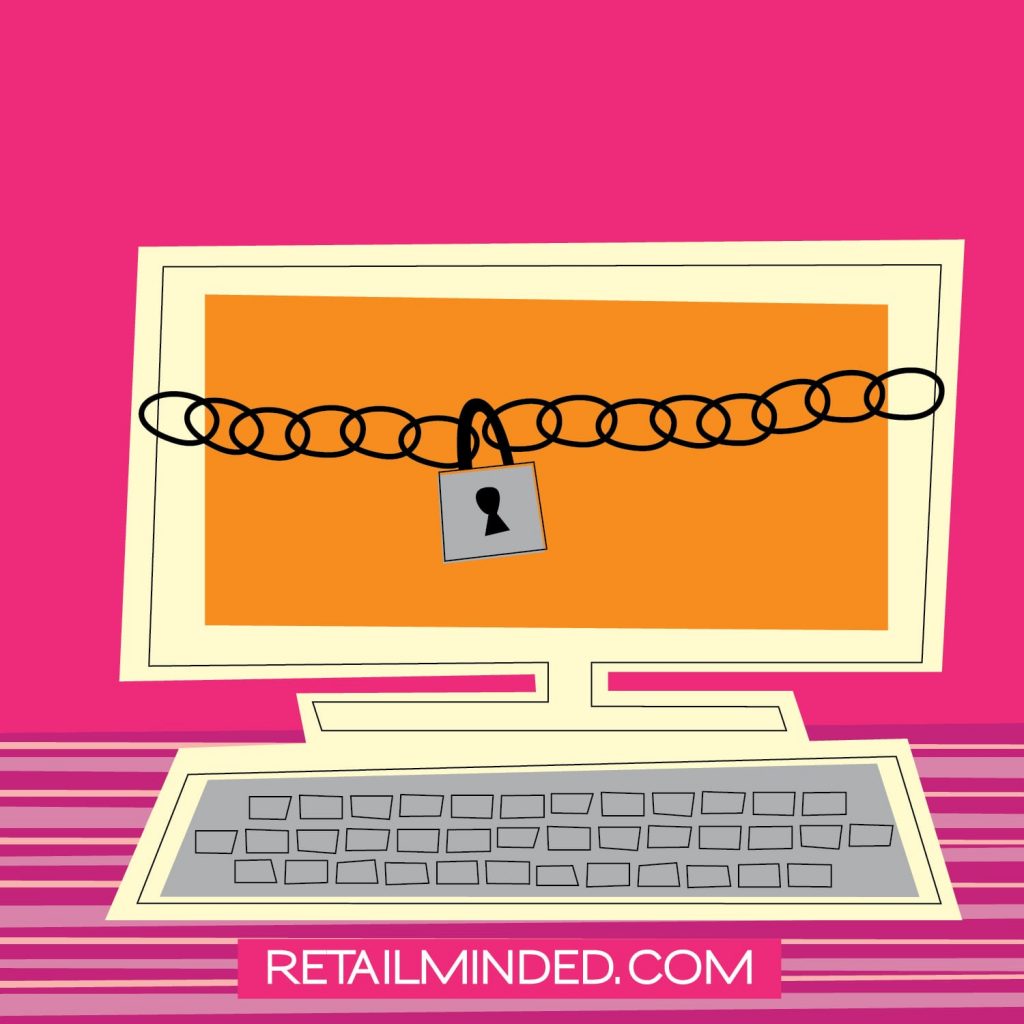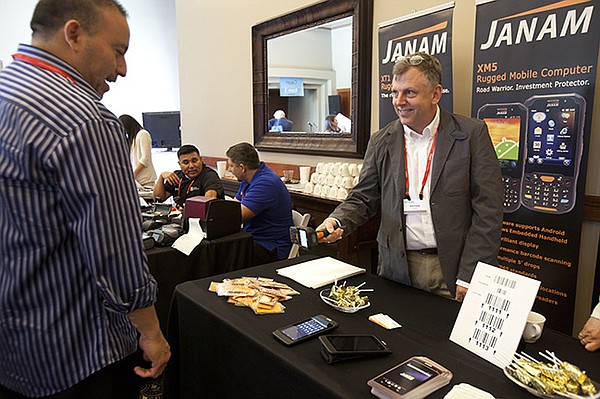The study also found that personalizing the customer experience is a crucial step in winning back the hearts and wallets of frustrated shoppers who aren’t finding the merchandise or the environment they prefer.
Consumers have more options than ever, both from Internet retailers and brick-and-mortar stores. Having the best product selection doesn’t cut it anymore. (And frankly, the definition of an ideal product selection differs from shopper to shopper, anyway.) Stores need to embrace digital tools in a way that makes millions of shoppers feel like they’re being catered to individually, at least if they want to remain competitive.
Creating a truly personalized shopping experience doesn’t happen overnight. It’s a multi-step process, but one that’s vital for any retailer looking to remain competitive in an increasingly digitally driven world. Here are five steps brick and mortar stores can take to adopt the right technology and target customers with customized, memorable experiences.
Step 1: Understand Your Demographic
Example: In today’s tech-dominated landscape, the market rewards those who know their demographic best. In the case of Toys “R” Us, that audience is parents — and those parents are undeniably busy and always on-the-go.
The toy store understands this reality; parents are not looking to spend hours upon hours browsing aisles, reading descriptions for each toy they encounter. So they created a suite of mobile apps that make it easier and faster to get through the store and back to playtime.
Scanning the Internet for deals is replaced by text and email alerts; in-store barcode scanning allows shoppers to pull up product details in seconds; and shareable wish lists make avoiding duplicates in the playroom effortless. And when it’s time to pay, the store welcomes mobile payments from shoppers, a convenient choice that also allows the retailer to build a relationship with their customers even after they’ve left the store.
The takeaway: While tailoring the shopping experience to your target demographic is only the first step to personalization, it’s a crucial one. The best technology solutions take into account what real consumers’ lives look like. Understanding whether your customer base enjoys spending hours browsing or prefers to get what they need quickly is an essential step in determining where to invest your technology budget.
Step 2: Use Location To Your Advantage
Example: Location-aware technology can help retailers make shoppers feel less like one in a million and more like a shop’s number-one priority. It’s a great second step on the road to personalizing the experience that consumers have with your brand. Retailers large and small are leveraging these technologies to better target and engage consumers not just at the store, but also at specific locations within the store.
Lord & Taylor, for example, has capitalized on this opportunity in several ways, integrating third-party apps like mystery coupon-generator SnipSnap that pings users’ phones with a deal that can only be revealed when inside the walls of a store. This rewards customers for coming to the brick and mortar location and makes them feel like the retailer cares about their visit.
Shopkick’s “shopBeacon” program is another star in the burgeoning area of hyper-local. Currently active at two Macy’s department stores, one in San Francisco and one in New York City, the beacons turn customer phones into personal shoppers, guiding them through the in-store experience from the moment they step inside to the purchase-decision process. In addition to promoting deals and product suggestions, shopBeacon also channels previous in-app behavior to aid in buying decisions. For example, if a shopper indicated interest in a dress while browsing through products on the app, she might get a sale notification when she enters the formalwear department.
The takeaway: Context- and location-aware technology can be very powerful tools for retailers to give customers what they want at the right time and in the right place and truly enrich their local shopping experience. Moreover, with the right technology, major pain points of the brick and mortar retail experience — like crowds and hard-to-navigate stores — can be mitigated, making the entire retail experience more enjoyable and personal.
Step 3: Use Tools To Empower Associates
Example: Dealing with limited inventory and returns from unhappy customers has always been a part of the sales associate’s day — until now. To truly cater to each customer’s specific preferences, more and more stores are bridging the gap between physical stock and the digital world.
How are they doing this? One example is three-dimensional scanning app Shoefitr, a service blurring the lines between shoppers’ digital and actual worlds, bringing its ability to scan customers’ feet and determine ideal shoe size to over 1,000 footwear brands like Cole Haan and Puma. Sales associates equipped with this technology can help customers make more informed purchases, which ultimately leads to fewer returns.
Another player helping make this happen is eBay. The site now offers a selection of retail tools called the Retail Associate Platform, with early adopters including Aeropostale, DSW and Nine West. When a shopper has their sights set on an out-of-stock item, eBay’s platform simplifies the process of getting it to them. Its “Endless Aisle” app provides browsing access to a store’s full stock at all locations and allows associates to process purchases directly via the app. These retailers are now using the platform in 1,500 stores, making virtually any merchandise request easy to fulfill.
The takeaway: When shoppers have trouble finding the item they need, they may decide they don’t need it that bad after all, move on to a different store or go online, eliminating the retailer from the equation altogether. Now, technology like the services offered by Shoefitr and eBay connects shoppers to the items they want and need—no matter where they’re located. Suddenly, the store’s square footage doesn’t have to be so limiting, and sales associates have more ways to connect customers with the products they want and need.
Step 4: Democratize The Personal Shopper Experience
Example: Chico’s has made headlines for its omnichannel success — and rightfully so. The retailer’s tech tool belt includes everything from RFID technology to tablets that enable associates to enter customer information gathered during a visit and continue providing item recommendations once that shopper has left the store.
It was a hefty up-front investment, but it’s paying off in spades. Customer engagement is a top priority for the brand, and now sales associates can communicate with shoppers in a multitude of ways, even scheduling one-on-one styling sessions.
They also feature “tech tables,” touchscreen stations that allow shoppers to interact with the brand in a more in-depth way, not only browsing a greater range of apparel than a single store could stock, but also accessing content that helps them make buying decisions. While consumers are interacting with Chicos’ in-store technology, they’re also providing valuable information that can help the retailer make more informed shopping suggestions.
According to the Wall Street Journal, Chico’s isn’t done with the high-tech advancements; future in-store offerings could include digital signs that sense a shopper’s presence and make customized shopping suggestions.
The takeaway: In order to democratize the personal shopping experience, Chico’s has used technology to offer one-on-one styling, personalized recommendations and access to a wider range of stock than a single store could carry on its own. In doing this, they’ve taken an experience that was once limited to the wealthiest customers and made it available to everyone, making shopping more personal and enjoyable.
Step 5: Use Data To Keep Shoppers Loyal
Example: While the first four steps will help create a memorable shopping experience and put you on the path toward personalization, there’s one final step to ensuring that your efforts don’t ultimately go to waste: fostering loyalty.
Successful loyalty programs go well beyond paper punch cards, bridging the gap between online and in-store experiences. The best programs motivate shoppers to make that first purchase, come back to your store again and again and ultimately develop a preference for your brand. Staying connected to consumers and understanding their shopping habits is the best way to develop loyalty, and the right technology can make this process much easier.
The good news is that today's advanced payment and customer relationship management systems make it possible to learn more than ever about your customers. With this data, you can offer loyalty programs that are tailored to their specific interests and that foster customer lifetime value. This is where the rubber meets the road.
Take the Loyallist program from Bloomingdale’s. Not only are frequent shoppers rewarded with extra points they can redeem for gift cards and complimentary shipping, but the retailer also offers apps that make the shopping experience more personal and memorable.
Downloaders of the Big Brown Bag app, which integrates with the Loyallist program, get the royal shopping treatment with the ability to sync local in-store events with their calendars, manage registries and even settle up their accounts. They can also redeem rewards points right from their phones. By giving customers the tools to personalize their experience and build their ideal interaction with the store, Bloomingdales has taken an important step in fostering loyalty.
Takeaway: Using technology to power your loyalty program is a great way to make shoppers feel like they have exclusive access to a retailer’s best offerings. With services like the Loyallist program that create a more personal relationship between consumer and brand, everyone wins.
The options for bringing personalization into the retail world are vast, so it may feel overwhelming to keep up with the changing times. While we’re still in the early stages of adoption, the technology used by a select group of companies today will soon become mainstream. By following the five steps outlined above, retailers can build an attainable strategy and work to bring the most effective solutions into their stores.
As you work towards choosing which technologies to integrate, keep in mind that the best retail tech allows stores to better connect with shoppers and revolutionize the way they interact with products, long before they step into the store and long after they’ve left. To remain ahead of the pack, retailers need to create and continually refine the shopping experience so it’s easier to navigate, more convenient and better personalized to each individual shopper.
To view the original article visit: http://www.retailtouchpoints.com/features/executive-viewpoints/keeping-up-with-the-times-five-steps-to-a-personalized-retail-experience

































